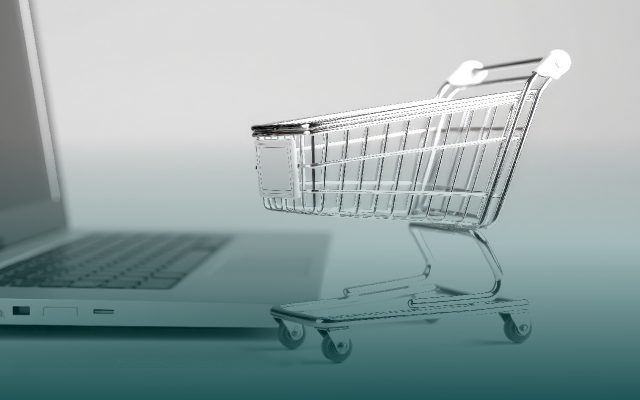What did the e-commerce store say when it opened? “Let’s get this checkout line started!”, says a joke. But in reality, owners of online stores can’t treat their clients this way if they want to retain them.
According to Zendesk, 62% of shoppers believe businesses should change how they tailor their customer experiences. 70% of consumers are willing to spend more at companies that do so.
Customers seek companies whose products and services meet their unique needs and make them feel valued. If they don’t get personalized experience, they might switch to competitors who offer a more tailored approach. Customers need businesses that truly understand and address their pain points.
That’s why personalization in e-commerce has become a must-have strategy aiming to help companies stand out and build strong emotional bonds with customers. Gone are the days when a one-size-fits-all approach could engage the target audience. Today, consumers expect experiences that resonate with their interests.
The need for personalization extends beyond simply making customers feel valued—directly impacting business success. In a world where customer expectations are rising and competition is fierce, implementing effective e-commerce personalization is no longer optional; it’s essential for growth and survival.
Wondering how to personalize your online store? We’ll explain more in our article. Keep reading!
What Stands Behind E-Commerce Personalization
E-commerce personalization means customizing online shopping experiences for each customer. This is done by showing content, product suggestions, and offers that match their preferences, actions, and demographics. In turn, this improves customer satisfaction, keeps them engaged, and increases sales.
From personalized product recommendations and advertisements to coupons and other bonuses, this is how you can customize shopping experiences. The main thing is to collect and analyze relevant data on the audience’s shopping behavior, online activity, and customer demographics.
Some companies are still skeptical about e-commerce personalization. If you belong to them or your customization plan is still in the air, here is the information to reflect and consider:
- Over 60% of consumers are willing to share personal information to receive personalized offers. It means that they expect recommendations based on their preferences.
- 90% of consumers expect a consistent experience across different platforms. They want the same personalization and ease of use no matter where they shop, pushing companies to deliver a smooth, unified experience.
If you still have doubts about the need for personalization in e-commerce, we can provide more statistics for you:
- Personalization can increase revenue by up to 26% through AI-powered product recommendations.
- AI-driven personalization can boost retail growth by 15%.
So see, higher conversion rates, customer engagement and satisfaction, and better retention rates stand behind personalization in e-commerce.
Contact the Forbytes team to discover how e-commerce personalization can unlock new opportunities and drive growth for your business.
The Power of Personalization in E-Commerce for Your Business
Traditionally, some companies try to create universal advertisement messages as well as product offerings and firmly believe that it will work for them. But if John prefers red apples and Mary likes green ones, a company can’t offer only red apples and expect both to be satisfied.
The problem is that customers’ needs are different, and you can’t ignore them. Personalization in e-commerce can help you consider individual preferences and diversify your offerings, offering several key benefits:
Higher conversion rates
According to a study by Monetate, personalized product recommendations can have a significant impact on conversion rates. Shoppers who engaged with a recommended product had a 70% higher conversion rate. Plus, personalized product recommendations can increase conversion rates by up to 8%.
For example, you can show customers relevant products based on their browsing history by ensuring an increase in conversion rates. Personalized recommendations can lead to better engagement and retention.
Many satisfied clients
Imagine walking into a store where the salesperson remembers your name, knows your shoe preferences, and has already a few items to offer to you. How do you feel when you hear this? Of course, you feel happy and pretty special. That’s the kind of magic personalization in e-commerce can create for you.
According to the latest report, 81% of customers appreciate when e-commerce companies tailor their experience to individual needs. 70% of customers feel more valued when they receive a personalized experience. So, now you know how to increase their satisfaction, as well as engagement.
Immune to fierce rivalry
E-commerce personalization helps brands reinforce competitive advantage. Offering tailored customer experiences online stores develop immune to fierce rivalry. As e-commerce is a cut-throat area, personalization is a good way to establish a place for itself.
This unique approach not only fosters customer loyalty but also makes it harder for rivals to lure customers away. Personalization helps brands create lasting relationships and ensure long-term business success.
Boosted sales
According to the latest report, personalization in e-commerce can drive a 10-15% revenue lift, with some companies experiencing up to a 25% increase. Marketers see an average increase of 20% in sales because of the use of personalized experiences.
Personalization helps businesses boost their sales. Relevance in recommended offerings means more returning visitors and purchases, which results in higher sales.
So see, personalization in e-commerce matters for you because it will lead to well-tailored attempts to provide your target audience with dynamic content, elevated experience, and personal interaction.
How to Develop a Strategy for E-Commerce Personalization
Now, you’re aware of all the core benefits of e-commerce personalization, so, it’s high time to understand how to build an efficient strategy for e-commerce personalization. Here are major steps to consider:
Step 1: Choose the relevant audience
Start by identifying which customers you’re going to target. Then, segment your audience to detect the most valuable customers and understand their preferences. Then, build dynamic profiles using information like demographics, browsing behavior, and social media activity. Once you have these profiles, you can tailor shopping experiences to match customer expectations across different channels and touchpoints.
Step 2: Set your personalization goals
Setting clear goals for your personalization efforts aids in tracking success. This is a key part, which helps create a tailored strategy for your business. Common goals include improving metrics like revenue, conversion rate, bounce rate, and engagement. You can also focus on other e-commerce metrics like:
- Average Page Views
- Add-to-Cart Rate
- Cart Abandonment Rate
- Revenue Per Session
- Average Order Value
- Total Time on Site
These goals help get key metrics and use them for the improvement of your overall business performance.
Step 3: Develop your strategy
Another step is to build an e-commerce personalization strategy that will help accomplish set goals. So, we recommend the following actions:
- Create a budget for personalization
- Assign specific responsibilities to your team
- Ensure that your strategy aligns with your goals
- Establish a process for continuous improvements
Step 4: Choose the right e-commerce personalization tool
The final step of your strategy is to pick the right tool that will contribute to e-commerce personalization. We recommend taking into consideration AI-driven platforms that can process real-time data and are marketer-friendly.
For example, Monetate is an AI-driven e-commerce personalization that enables market segmentation using multiple data sources, including behavior and context.
Taking all these steps is needed to prioritize e-commerce personalization and accomplish your company’s overall business goals.
Need help with e-commerce personalization? Contact Forbytes to discover how personalized strategies can boost your business.
Best Tools for E-Commerce Personalization
When you know how to build an e-commerce personalization strategy, it’s high time to understand what software can help you. When choosing a tool, consider its channel support, the type of data it requires, and how quickly it can be set up.
Tools that support multiple touchpoints and allow personalization without personal data can deliver faster results. Additionally, those that offer quick onboarding with templates can provide a better return on investment. Here are all the solutions we recommend to consider for personalization:
Insider for customization of customer interactions
Insider is a platform that helps businesses personalize their customer interactions across different channels like websites, email, WhatsApp, Facebook Messenger, and SMS.
Key features of this software include:
- Customer Data Platform (CDP): Combines data from multiple sources (e.g., website, CRM, contact center) to create detailed customer profiles.
- AI-powered Smart Recommendations: Delivers personalized product suggestions. Avon used this to increase average order value by 11% and click-through rates by 13%.
- A/B Testing: This lets you test different strategies across channels to boost engagement and conversions.
- Other Tools: Includes personalized search, mobile stories, and more.
Insider simplifies managing all your personalization from one place, eliminating the need to use multiple tools.
DynamicYield for segmentation and product recommendations
DynamicYield is a platform used by retailers and other businesses to personalize customer experiences. It offers features like segmentation, product recommendations, and A/B testing, all managed through its Experience OS.
Personalization channels include web (on-site), push notifications, email, mobile apps, and ads. However, DynamicYield does not support personalization on messaging platforms like SMS, Facebook Messenger, or WhatsApp like Insider does.
Salesforce for personalized shopping experiences
Salesforce offers two personalization solutions: Marketing Cloud and Commerce Cloud.
- Marketing Cloud is a traditional tool for personalization and automation, using machine learning to connect customer data across channels and create consistent experiences. It includes a Journey Builder for mapping customer journeys.
- Commerce Cloud is an e-commerce platform designed for B2B and B2C businesses to create personalized shopping experiences. As a result, customers can stay within a single data-driven channel rather than switching between multiple ones.
Nosto for tailored offerings
Nosto is a commerce experience platform offering:
- On-site personalization
- Personalized email marketing
- Category Merchandising (adjusts product order based on user behavior)
- Content Personalization (tailors messages and visuals)
- Dynamic Bundles (for cross-sells and upsells)
It integrates with platforms like Shopify, BigCommerce, and Magento. While it may not support as many channels or advanced features as others, it’s a good fit for small and mid-sized online stores.
Ready to Personalize Your E-Commerce Business? Trust Forbytes
All in all, e-commerce personalization is a win-win strategy for your business if you want to stay ahead of the pack. From retaining existing audiences to attracting new ones, customization can exceed your expectations. With our tips, you’re already equipped to embark on your journey and achieve faster business returns.
But it all starts with the right personalization tools that will help your company grow and deliver exceptional customer experience. We hope that our recommendations prove helpful.
At Forbytes, we combine our e-commerce expertise and digital transformation strategies to improve clients’ solutions and create outstanding customer experiences. Let us help your business grow and succeed with sustainable e-commerce models. Contact us to discover how we can team up.













